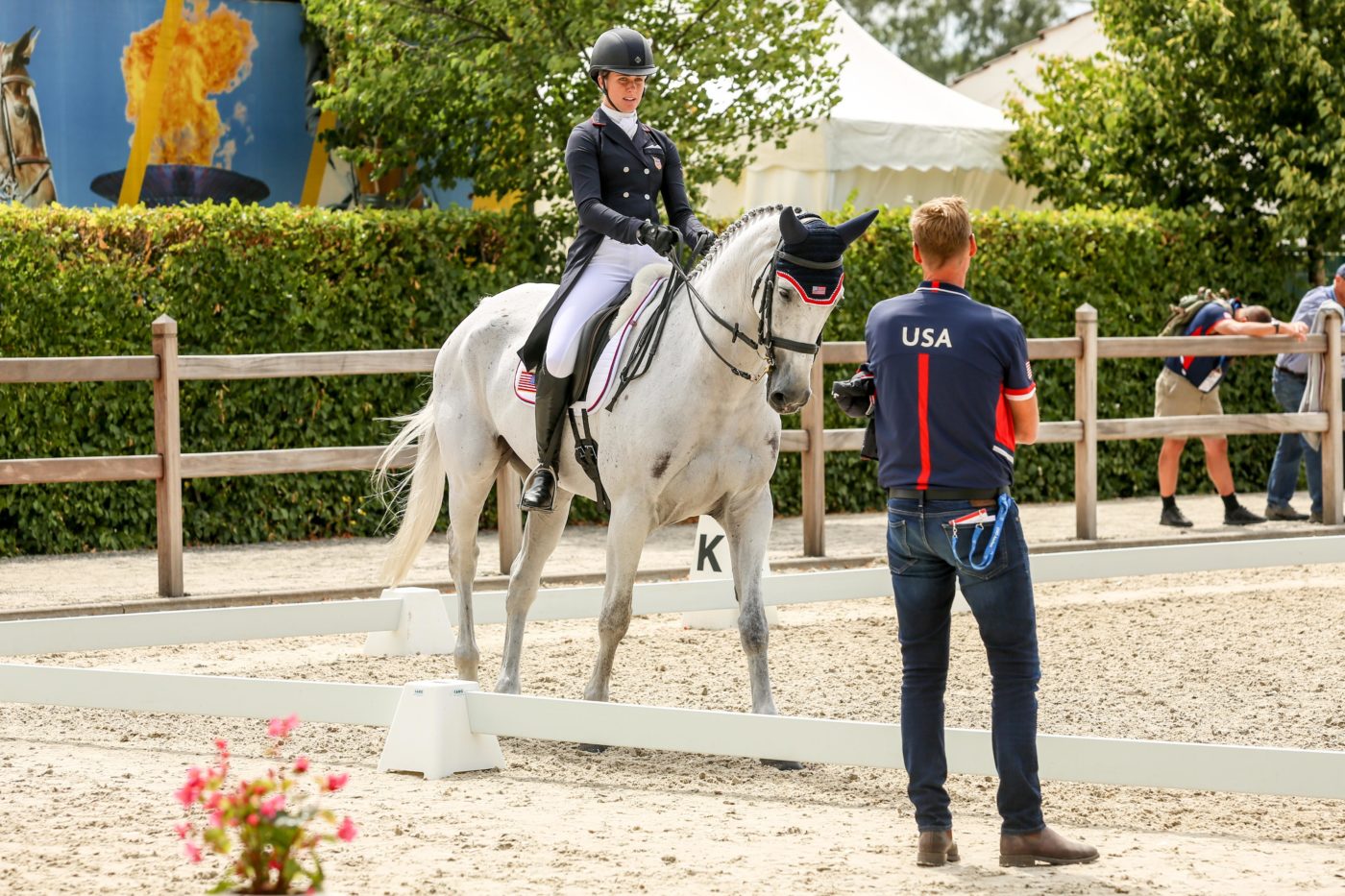Renew Your USEA Membership for the 2023 Season Today LEARN MORE

This article originally appeared in the September/October 2019 issue of Eventing USA magazine.
The past three months from Aachen have been an intense time of preparing for team events and international competitions. We are not producing the results that we need at Aachen historically, and we are looking closer at how to better prepare our combinations for this event. We also have to be aware that the show jumping arena at Aachen is quite unique in the size and footing. Even though Aachen is the best venue in the world, it takes experience to ride around that track well. Equally, the cross-country is one of the most difficult courses to ride because of the intensity and technicality if you are going for the optimum time. It’s a style of course we’re not used to in the USA.
Looking to the Pan American Games in Lima, Peru, it was a great relief to all of us that we got our qualification for the 2020 Tokyo Olympic Games. However, what we are really proud of is how our riders and the full group of grooms, support staff, and everyone involved operated as a team, and for strong performances in all three phases. Our riders deserved the medals they won, and a big thank you goes to the owners who put their horses forward to this important event.
Next we traveled out to Ireland with a group of horses to Millstreet, which is one of the best events in Europe with an always challenging and physically demanding cross-country, as well as a great venue in general. Our horses performed well across the board. We had six horses that completed the competition, and all of them jumped clear cross-country and show jumping rounds. I feel all of the riders who competed at Millstreet are tracking in the right direction. It was a fantastic preparation for the horses headed to Burghley.
This year’s Burghley track was very tough – purely because of the size of the fences, tight optimum time, and very few let-up fences in the first two-thirds of the track. It took very accurate riding and the need of a very scopey horse. It was great to see four U.S. combinations in the top 15, which is one of the best performances in history from U.S. riders at Burghley. However, our best rider was still 20 penalty marks from the winning rider, so we still have a lot of work to do.
It was also pleasing that 11 riders put their horses on a flight to have a go at Burghley this year. I believe if your ambition is to be one of the best riders in the world, you need to have the skills to ride all the different styles of courses presented at the five-star events and Aachen. This has to be the long-term goal for riders aspiring to be on medal-winning teams of the future. Not everyone will agree with me on this, as championships are run at a lower level, but I find it is only at these events that riders are put under near equal pressure to a championship. It is an opportunity to test themselves against the best.
Over the last two years our High Performance program has condensed the number of combinations in order to target our resources to increase impact. However, this year I have spent a lot of time working with riders who are not on the training lists on my travels through the country with the goal of talent scouting and learning about the new riders coming up through the grades. It’s also been hugely beneficial to have the North American Futures Team Challenge at Carolina International and Bromont, as well as riders competing in the Nations Cup Final at Boekelo, which has given me access to work with other riders in training and competition. These are key opportunities for me to work with new riders and understand their ambitions and backgrounds and where their plans lie for the future.
International competitions have also given me the opportunity to connect more closely with other riders outside of the High Performance program. Before Millstreet, we held a mini training camp in Europe for four days before we went to the venue. We found this very beneficial as a preparation for the riders and also for me to gauge where each horse was at in the lead-up, which prepared me to be a better help for the riders during the competitions. We will hold a mini camp again for four days in Holland ahead of the Nations Cup at Boekelo before we go to the venue. This is a system we believe is beneficial, and we will continue to hold these mini camps as much as possible before international competitions.
Since the Ocala Jockey Club last year, we have been in closer dialogue with the USEF Eligible Athletes Committee and have now established regular meetings between the riders and High Performance leadership to have a closer and more direct line of communication. We want to have an open door policy and open communication with riders who have a serious program in place and aspire to compete on future teams. Our goal is to connect with self-driven riders who are prepared to do the work, show the competitive attitude needed to succeed, and deserve attention but have not quite reached the standard expected to be on a training list. This is how USEF Developing Coach Leslie Law and I see ourselves operating. There is availability for riders to directly connect with us, but this will require a cultural change from riders to put themselves forward in this manner.
Did you enjoy this article? Want to receive Eventing USA straight to your mailbox? Members receive Eventing USA as part of their USEA Membership or you can purchase individual issues from the USEA Shop.